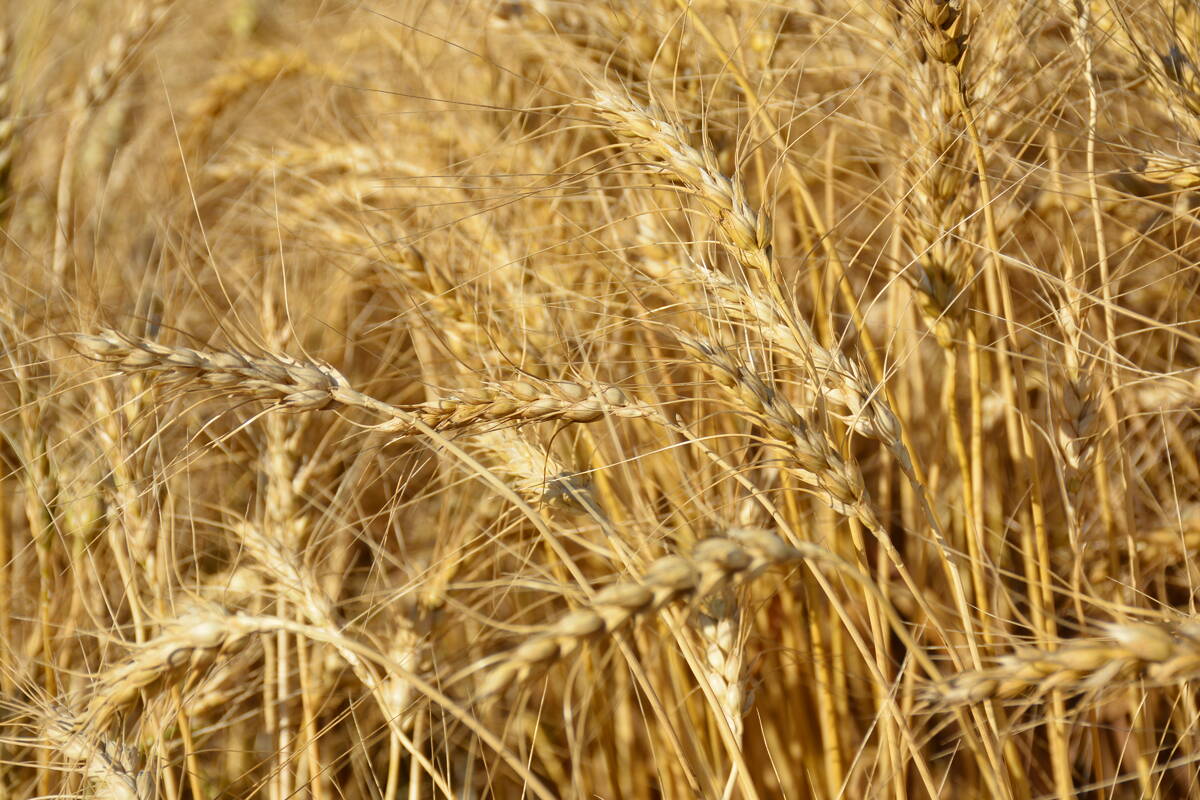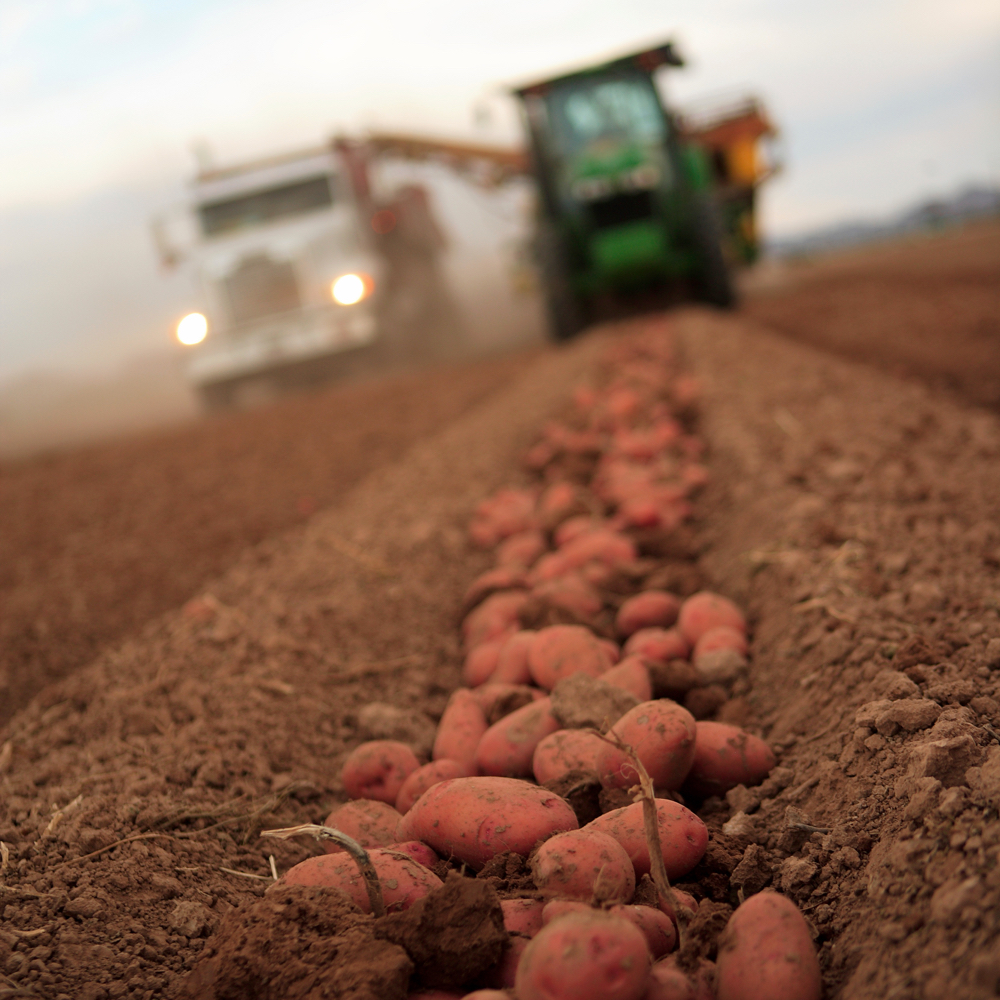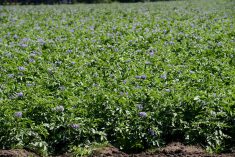Sometimes Mother Nature provides perfect conditions for late blight, but on-farm mitigation practices can help control it.
Reducing late blight risk was the focus of a panel discussion at the Ontario Potato Conference held in Guelph in late February.
Why it matters: Late blight has been increasing in potato growing regions in recent years.
Read Also

Scientists discover a gene that could triple wheat production
This discovery could give breeders a powerful new tool to boost yields without needing more land, water, or fertilizer.
“We’re never going to conquer it completely; we just have to reduce it to a dull roar, as they say,” said panelist Gary Secor, a professor of plant pathology with North Dakota State University.
Secor said late blight is always around and “it attacks you when you least expect it.”
Ontario has no late blight-resistant potato varieties, and even resistant varieties in the United States don’t last long because late blight has evolved quickly, he said.
High humidity, rain and high harvest pulp temperatures leading to soft rot and leak played a part in Ontario’s 2023 outbreak, but so did volunteers, culls and seed potatoes by providing hosts.
Removing those hosts can disrupt transmission, Secor said.
“You can import late blight on your seed line. Because seed is not washed, it’s hard to see those external symptoms. One to three per cent of the time, you can get transmission during the cutting operation. It’s enough to start an epidemic.”
The percentage may seem low, but he said one lesion can produce up to 10,000 spores.
“Less than 25 spores can cause a strong effect,” Secor warned. “You can use seed treatments to manage late blight spread during the cutting operations, but most come with a secondary bacterial soft rot.”
He said treating seeds with Revus and Reason is effective. Unfortunately, the government removed the use of mancozeb after the 2023 growing season.
Mitigation strategies
Secor suspects there will be late blight issues in 2024 and recommended that producers develop integrated multi-tactic management protocols before, during and after the season.
Late blight can move from home gardens and market tomatoes, so providing non-farming neighbours with clean seed can lessen risk.
Late blight spores flourish in cool, wet weather. Hot, dry weather and ultraviolet light can kill spores or limit leaf presence, but reintroduction of moisture results in a resurgence, Secor explained.
Fungicide application
Scouting and regular use of foliar fungicides helps, he said, and spraying once it’s present will also manage the disease.
Secor likes Corteva’s Orondis, which absorbs quickly, protects for seven to 14 days and moves up and down, protecting new growth. He suggests a five- to 10-day interval with higher rates when the disease is present, with a “spray early, spray often” mantra for 2024.
Spore monitoring
New Brunswick potato growers use spore monitors for late blight three times a week, and share data with neighbouring Maine for improved disease management.
The optical microscopy monitoring of spores provides five to seven days of early disease detection, giving growers sufficient lead time for preventive measures.
Mark VanOostrum, P.Ag. and WD Potato Ltd. supply manager, said Ontario spore traps failed to report any cases in 2023, despite being near fields with confirmed infection.
“We don’t have a provincially funded late blight monitoring system,” he said, so growers should share information and eliminate potential avenues for disease spread.
Good yields were anticipated in 2023, but the year had a massive range of 230 to 450 bags per acre. VanOostrum attributed lower yields to growers who initiated early top kill of approximately 2,400 acres to limit disease risk.
In the absence of resistant varieties, producers should increase scouting, use 100 per cent quarantine measures to control suspect seed, cull piles and volunteers, and manage harvest to prevent late blight development, said VanOostrum.
Fields and bins that were not treated with Orondis or phosphorus acid contributed to later problems in potato storage.
Cover crops, biofumigation
Andrew Robinson, a North Dakota State and University of Minnesota potato extension agronomist, said eliminating initial inoculum by destroying cull piles and introducing cover crops helps reduce volunteer-related disease pressure, suppresses weeds, provides nitrogen and reduces erosion.
Mustard excels at disease suppression, oilseed radish addresses compaction, legumes increase nitrogen, grasses provide residual nitrogen uptake, and all provide erosion control. Reducing the presence of volunteer potatoes is also important.
“Using competitive crops that actually grow fast that have a very dense canopy is going to help reduce the ability of that (volunteer) plant to grow,” said Robinson, pointing to winter or spring wheat.
“You’re going to reduce the amount of sunlight coming into that canopy, which is going to make that plant a lot weaker.”
Extreme cold can kill volunteers. A Washington State study shows that at 20 cm soil depth, it takes 25 hours of -10 C or 50 hours of -2 C to kill a tuber.
“Every winter is different. This winter we’ve been very mild,” Robinson said. “In a year like this, where you may not have a lot of snow cover (and) more mild temperatures, your likelihood for volunteers in the soil increases.”
Keeping tubers close to the soil surface in fall increases freezing potential, so no-till or disking is better than plowing, which buries tubers.
Another option is to graze livestock on potatoes that fell off the harvester to eradicate volunteer risk.
Cull piles, especially those covered in snow, can be a hotbed for late blight because they aren’t treated with fungicide.















